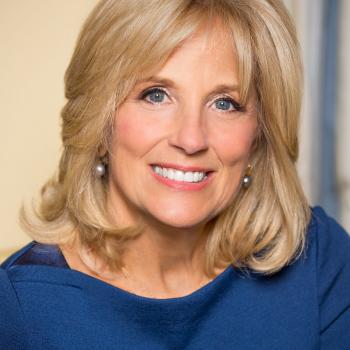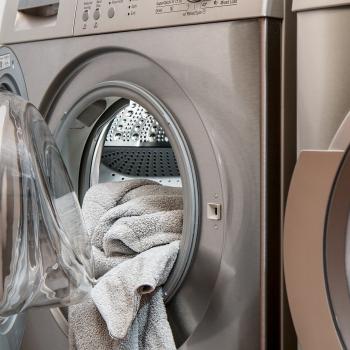Early on in graduate school I met a woman who identifies as a second wave feminist (personally, I’m third wave all the way). She told me that she’s opposed to stay at home moms, because every time a woman drops out of the workforce, or declines to enter it, she stands in the way of gender equality and makes things harder for women as a whole. How? Well, the greater the number of women who drop out of the workforce, the more likely employers will be to view women as a risky investment—and the fewer women in the workplace the more likely workplaces will be male-dominated and male-centric. In fact, she went so far as to suggest that women should be required to work and not allowed to stay home, as this would ultimately lead to greater gender equality.
While I could see the intuitive sense in what she was saying, it made me extremely uncomfortable. I have several good friends who are stay at home moms, two in particular. Each of them worked in their early to mid twenties, and quit to stay home when they had their first baby. In each case these decisions were affected by their job prospects—one in particular was on a job track with little in the way of advancement—and by the extremely high cost of daycare, as well as by personal preference. Both identify as feminists, and both have completely supportive husbands. I am not okay with the idea of forcing these women to have jobs outside of the home, especially when home is where they’ve chosen to be.
I think part of the problem here is that sometimes there is a conflict between choice and equality. I mean, think about it: If women always chose to take low paying jobs (say, teacher, or secretary) while men chose to take high paying jobs (say, accountant, or banker), there would never be economic equality between the genders. And it’s not just that. As long as more women go into teaching and more men into banking, even if it is by choice, teaching will pay less and banking as a career won’t be friendly to women. If you could equalize the number going into each, this would start to change. So it becomes a sort of circle, and sometimes an endorsement of “choice” is not actually the most efficient way to bring about equality. The woman I met in graduate school was right that the most efficient way of achieving economic and social equality, as well as a more family friendly workplace environment, would be to require all women to enter the workplace.
Let me try to explain where I differ. See, we all make bounded choices. My friends’ choices, for instance, were affected by daycare costs. Similarly, one of them had gotten a traditionally female degree that didn’t lead to great job prospects, which also affected her choice. We don’t make choices in a vacuum, but we do try to make the choices that are best for us, and our families, in our specific circumstances.
I don’t want to constrain women’s choices, I want to change the factors that serve as boundaries around women’s choices. Yes, I understand that, as the woman I met my first year of graduate school pointed out, these factors are reinforced in the present by women’s choices—if every woman worked, the demand for government subsidized daycare, for instance, might be great enough to overcome opponents to the measure. But I think we have to try to change these factors using what we have now, and I think we can do this, though I am not saying it will be easy. I want paid parental leave (for both genders), subsidized daycare and after school care, and family friendly work environments (including things like making part time work more viable). I want to deconstruct the stereotyping of some careers as feminine and some as masculine while also working to increase the monetary value placed on traditionally feminine spheres like teaching.
I suppose my answer is this: I want to do things that make women’s choices more free by changing the factors that make their choices bounded without dictating their choices, not things that may bring greater freedom and equality in the future but in the present require women to do “what is best” for women as a whole regardless of their present circumstances is what is best for them. Remember how I said that women’s choices are bounded? Well, if we (whoever “we” is here) required that all women work and therefore put my friends back in the workforce, that wouldn’t change the fact that daycare costs would eat up a great deal of their paychecks or the fact that one of my friends would have little room for career advancement and might be stuck in a dead-end job. Forcing women into the workforce might bring about some positive changes long term, but it would also require women like my friends to do things that, given their particular situations and constraints, are not best for them or their families.
But there’s more to be done beyond trying our darndest to remove the constraints on women’s choices. We need to be finding ways to improve the lot of stay at home moms. For example, as it currently stands, a woman who stays at home and never holds an outside job will not receive social security when she turns 65. I’m not sure how anyone can think this makes sense—we as a society ought to want to care for all of our elderly, not just those who have “paid in.” Further, we should envision a society in which people can more easily leave and reenter the workforce, a society in which gaps on a resume do not end one’s job prospects—and a society where the number of stay at home dads are not dwarfed by the number of stay at home moms. If we can change our society’s conversation from one about stay at home moms to one about stay at home parents, and also one about the needs of working parents, that will be progress.
It is our system that is the problem, not women’s choices to stay at home.
This all said, I don’t want to send you off thinking that there is some huge pool of feminists who want to force women into the workforce. There isn’t. The woman I met at the beginning of graduate school is, in my experience at least, a bit of an anomaly—and who know, she may have just been grandstanding. In my experience, second wave feminists are more likely to be critical of the ways individual women’s choices make things harder for women as a whole while third wave feminists are more likely to less critically endorse choice itself as empowering, but in practice both come together in recognizing the importance of eliminating constraints on women’s choices and working toward a world where parenthood is supported, whether through more family friendly work policies or through efforts to improve the long term prospects of stay at home parents. And this ability to look at, think about, and tinker with the system may well be what I like most about feminism.














